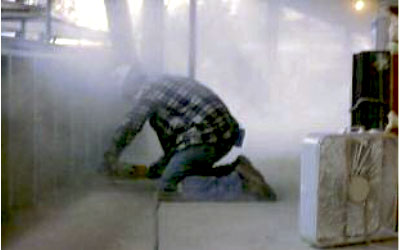Hazards of Silica Dust
Silica is present in both work and non-work environments and exposure to crystalline silica dust has long been known to cause a disease called “silicosis.” When you inhale crystalline silica the lung tissue reacts by developing fibrous tissue around trapped silica particles.

Appropriate Protection:
• Keep awareness high–which is the key to preventing silicosis. Recognize when silica dust may be generated and plan ahead to eliminate or control the dust at the source.
-
Use proper respiratory protection when point of operation controls cannot keep exposures below the recommended exposure limit.
-
Use Type CE pressure-demand, or positive-pressure, abrasive-blasting respirators when sandblasting.
-
Wear only a N95 NIOSH-certified respirator, if respirator protection is required. Do not alter the respirator. Do not wear a tight-fitting respirator with a beard or mustache that prevents a good seal between the respirator and the face.
-
Always use dust control systems when they are available and keep them well maintained.
-
Be aware that high silica concentrations can occur inside and outside enclosed areas during operations such as concrete or masonry sawing or abrasive blasting.
-
Do not eat, drink, or smoke in areas where sandblasting is being done or where silica dust is being generated.
-
Wear disposable or washable over-garments at the work site.
-
Wash your hands and face before eating, drinking, or smoking and vacuum (don’t blow) dust from your clothing.
-
Shower if possible and change into clean clothes before leaving the job site to prevent contamination of cars, homes, and other work areas.
- Remember: If it’s silica, it’s not just dust.
Make safety a reality and don’t be a fatality!!
Download flyer: STOTW_322_HazardsofSilicaDust.pdf (264.24 kb)
Download Spanish flyer: STOTW_322_HazardsofSilicaDust_esp.pdf (263.51 kb)

